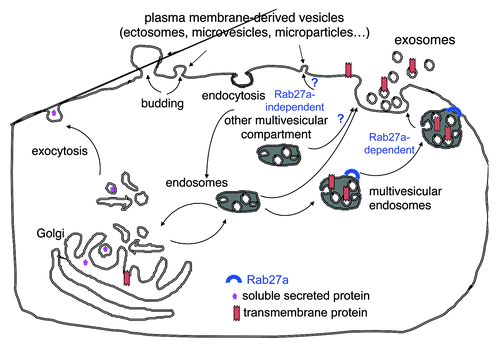Figures & data
Figure 1. Secretion of multiple types of extracellular vesicles. Cells simultaneously release membrane-enclosed vesicles formed either by direct budding of the plasma membrane (microvesicles, ectosomes, microparticles…) or by initial formation inside multivesicular endosomal compartments followed by fusion with the plasma membrane (exosomes). We have shown that Rab27a is required for the secretion of exosomes, but that other vesicles that are co-purified with exosomes by the classical ultracentrifugation protocol (and thus exhibit a comparable size) are secreted in a Rab27a-independent manner. Whether these latter vesicles are formed in other types of multivesicular compartments, or directly bud off the plasma membrane remains elusive.
